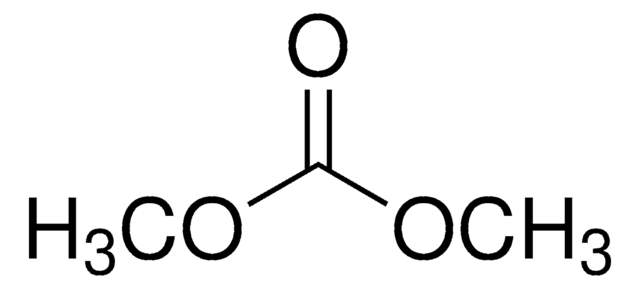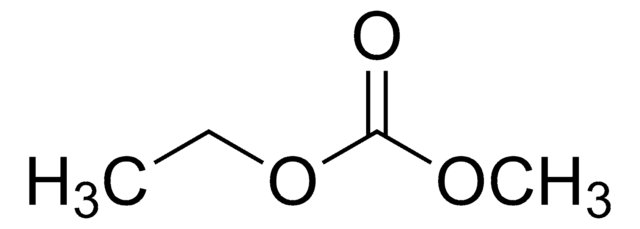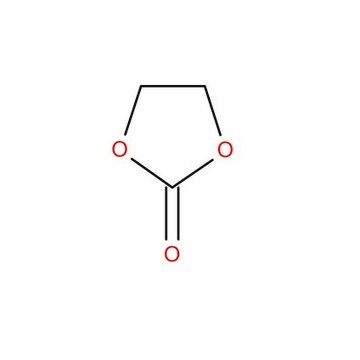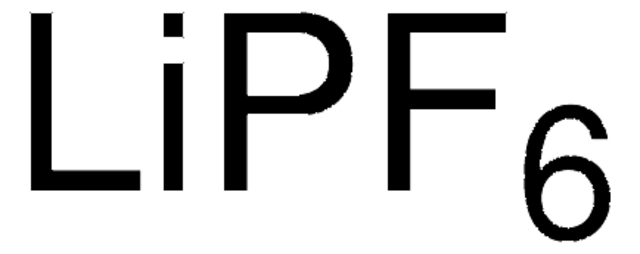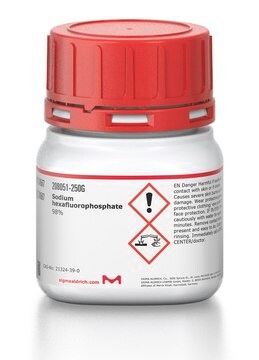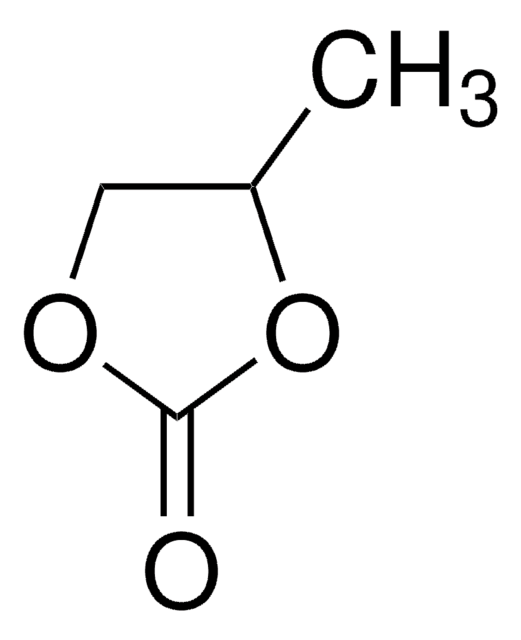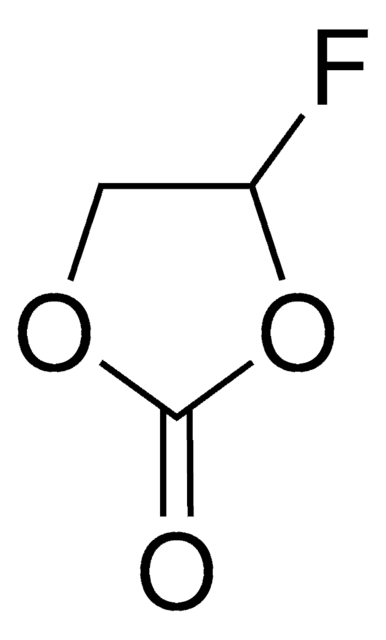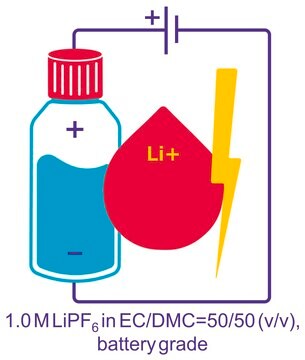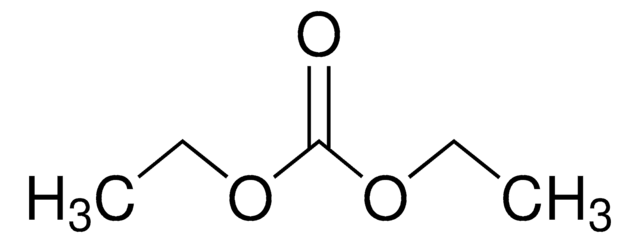Kluczowe dokumenty
809950
Ethylene carbonate
battery grade, ≥99%, acid <10 ppm, H2O <10 ppm
Synonim(y):
EC, 1,3-Dioxolan-2-one
About This Item
Polecane produkty
klasa czystości
battery grade
Poziom jakości
gęstość pary
3.04 (vs air)
ciśnienie pary
0.02 mmHg ( 36.4 °C)
Próba
≥99%
Formularz
solid
zanieczyszczenia
≤10 ppm H2O
≤10 ppm acid
bp
243-244 °C/740 mmHg (lit.)
mp
35-38 °C (lit.)
36 °C (exp.)
gęstość
1.321 g/mL at 25 °C (lit.)
Zastosowanie
battery manufacturing
ciąg SMILES
O=C1OCCO1
InChI
1S/C3H4O3/c4-3-5-1-2-6-3/h1-2H2
Klucz InChI
KMTRUDSVKNLOMY-UHFFFAOYSA-N
Szukasz podobnych produktów? Odwiedź Przewodnik dotyczący porównywania produktów
Opis ogólny
Zastosowanie
Przestroga
Informacje prawne
produkt powiązany
Hasło ostrzegawcze
Warning
Zwroty wskazujące rodzaj zagrożenia
Zwroty wskazujące środki ostrożności
Klasyfikacja zagrożeń
Acute Tox. 4 Oral - Eye Irrit. 2 - STOT RE 2 Oral
Organy docelowe
Kidney
Kod klasy składowania
11 - Combustible Solids
Klasa zagrożenia wodnego (WGK)
WGK 1
Temperatura zapłonu (°F)
289.4 °F - closed cup
Temperatura zapłonu (°C)
143 °C - closed cup
Wybierz jedną z najnowszych wersji:
Masz już ten produkt?
Dokumenty związane z niedawno zakupionymi produktami zostały zamieszczone w Bibliotece dokumentów.
Klienci oglądali również te produkty
Produkty
Dr. Schmuch, Dr. Siozios, Professor Dr. Winter, and Dr. Placke review the challenges and opportunities of nickelrich layered oxide cathode materials. They discuss production processes for the layered oxide cathode materials as well as their chemistry and morphology.
Due to the adverse impact of the continued use of fossil fuels on the earth’s environment and climate, researchers have been asked to develop new approaches for producing power using renewable sources like wind and solar energy
Here, we present a short review of ionic liquid electrolytes used in state-of-the-art rechargeable batteries including high performance and low-cost aluminum batteries, non-flammable Li-based batteries, and high-cycling and stable dual-graphite batteries. We also outline the key issues explored so as to identify the future direction of IL development.
Nasz zespół naukowców ma doświadczenie we wszystkich obszarach badań, w tym w naukach przyrodniczych, materiałoznawstwie, syntezie chemicznej, chromatografii, analityce i wielu innych dziedzinach.
Skontaktuj się z zespołem ds. pomocy technicznej
